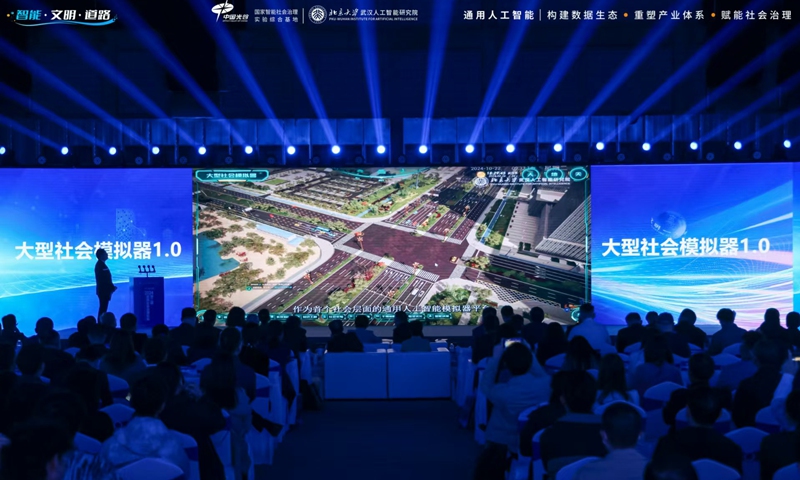AI social simulator released, capable of data deduction in areas of school bullying prevention, public safety

An AI social simulation platform developed by Chinese scientists was unveiled on Friday at a forum, capable of integrating multidimensional data to support social governance through early warning and analysis, particularly in areas such as intelligent transportation, public safety, and school bullying prevention.
The platform, called "Large Social Simulator 1.0," co-developed by scientists from Peking University-Wuhan Institute for Artificial Intelligence, Peking University, Tsinghua University and other universities and research institutes, was released at a forum in Wuhan, Hubei Province on Friday.
It has been used in seven schools in Donghu New Technology Development Zone, Wuhan, including for campus bullying alerts, AI physical assessments, and VR future classrooms, the Global Times learnt.
Pilot projects have also been applied in communities such as Hukou, Huanglongshan, and Xingyuan in Wuhan. These projects utilize VR simulation environments to simulate emergency population evacuation, and also assist in addressing challenges brought by residents throwing objects from heights.
This simulator is capable of simulating vast interactions among intelligent agents within a 3D modeling environment.
It is able to integrate multidimensional data from individuals, groups, and public services to establish a comprehensive data ecosystem.
The system firstly labels multi-layered model behaviors with two functions, which respectively refer to the utility system and value system, and then utilizes technologies called "distributed computing and high-concurrency scheduling" to accurately conduct the simulation, the Global Times learnt.
Zhu Songchun, director of the Beijing Institute for General Artificial Intelligence, another institute that co-developed the simulator, told the Global Times that he believed that in the future, the simulator will have a wide range of applications in managing mega cities and complex social governance, including monitoring the population flow.